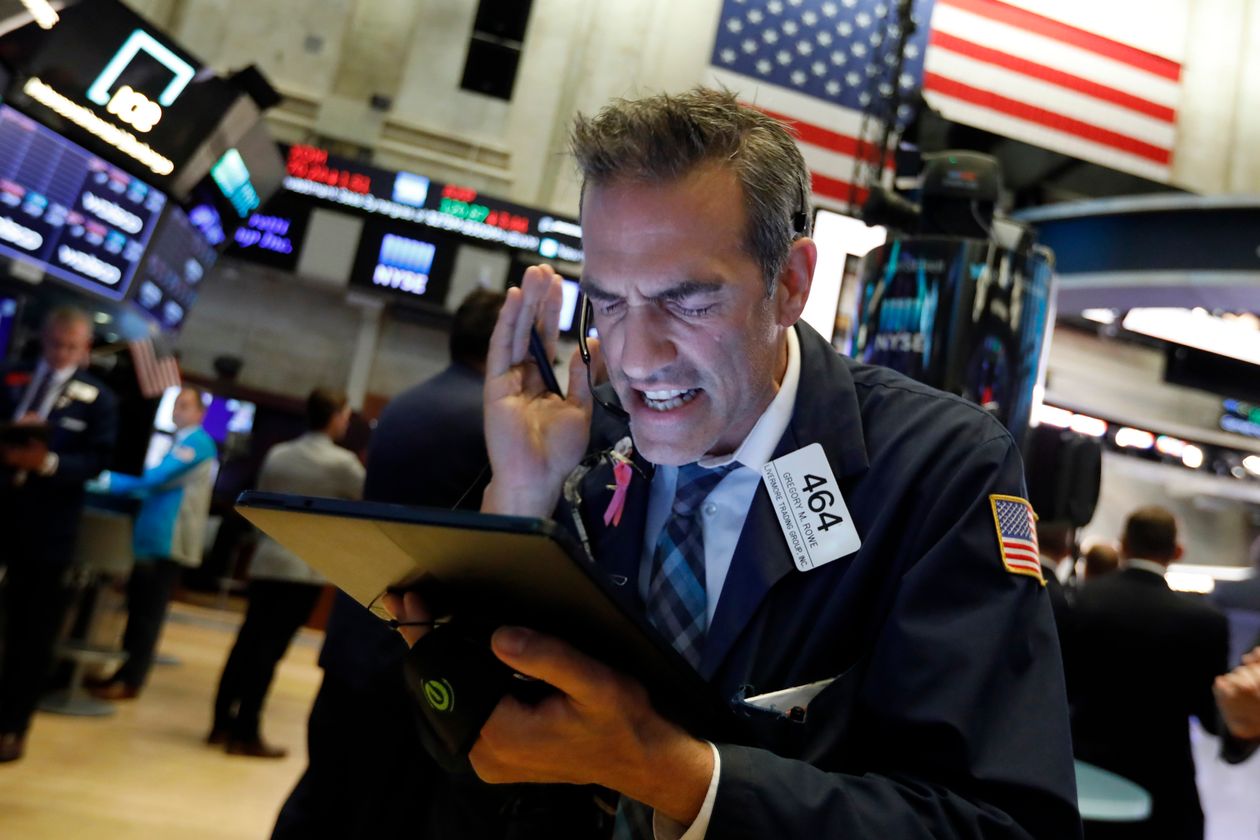By Fred Imbert, CNBC–
Stocks fell to their lows of the day Friday after President Donald Trump ordered in a series tweets that U.S. companies find alternatives to their operations in China. Apple led the way lower.
The Dow dropped more than 500 points as the S&P 500 and Nasdaq sank 2% and 2.6%, respectively.
Trump tweeted on Friday: “Our great American companies are hereby ordered to immediately start looking for an alternative to China, including bringing your companies HOME and making your products in the USA.”
“The threats always been out there but there’s been no need to provoke that,” said Art Hogan, chief market strategist at National Securities. “It’s almost like the administration was expecting the Fed to announce a rate cut at the Jackson hole meeting. And since Powell did not deliver, he went to defcon 5.”
Apple shares dropped 3.2%. The VanEck Vectors Semiconductor ETF (SMH) slid 2.7% as Nvidia and Broadcom both fell more than 4%. Caterpillar shares, meanwhile, pulled back 2.9%.
Trump’s tweets come after China unveiled new tariffs on Chinese goods. China will implement new tariffs on another $75 billion worth of U.S. goods, including autos. The tariffs will range between 5% and 10% and will be implemented in two batches on Sept. 1 and Dec. 15.
Earlier in the day, stocks teetered around the flatline after Federal Reserve Chairman Jerome Powell delivered a speech from an annual central banking symposium in Jackson Hole, Wyoming.
In it he said the Fed will do what it can to sustain the current economic expansion. “Our challenge now is to do what monetary policy can do to sustain the expansion so that the benefits of the strong jobs market extend to more of those still left behind, and so that inflation is centered firmly around 2 percent.”
He also noted there is no “rulebook” for the current U.S.-China trade war, adding that “fitting trade policy uncertainty into this framework is a new challenge.”
But traders may have wanted a clearer suggestion that the Fed would cut rates in September. The market was looking for a more aggressive walk-back of his now infamous “midcycle adjustment” comment that signaled the July rate cut was just an adjustment and not the start of a trend.
Powell said in Friday’s speech that “after a decade of progress toward maximum employment and price stability, the economy is close to both goals. ” Those comments likely didn’t assuage traders hoping for an aggressive easing cycle from the Fed.
“He’s walking a tightrope, he’s balancing so many things that no other fed chairman has had to do in terms of a very aggressive president, markets that are demanding faster and more rate cuts, the geopolitical challenges of trade and now he has a very divided group of fed presidents with very diverse views of where they should go next,” said Michael Arone, chief investment strategist at State Street Global Advisors. “His comments reflect that he’s not going to say ‘we’r cutting significantly over ht next couple of months’ … he’s really playing it down the middle.”
The yield curve remained only slightly positive on Friday. The spread between the 10-year Treasury yield and the 2-year rate inverted on Thursday after Fed members indicated a September rate cut was not a certainty, raising fears that the central bank would not be quick enough to save the economy from a recession. The yield curve has been a reliable recession indicator in the past.
However, St. Louis Fed President James Bullard told CNBC’s Steve Liesman on Friday that the central bank should keep cutting rates, noting that an inverted yield curve is “not a good place to be. ”
CNBC’s Yun Li and Patti Domm contributed to this report.


Leave A Comment
You must be logged in to post a comment.